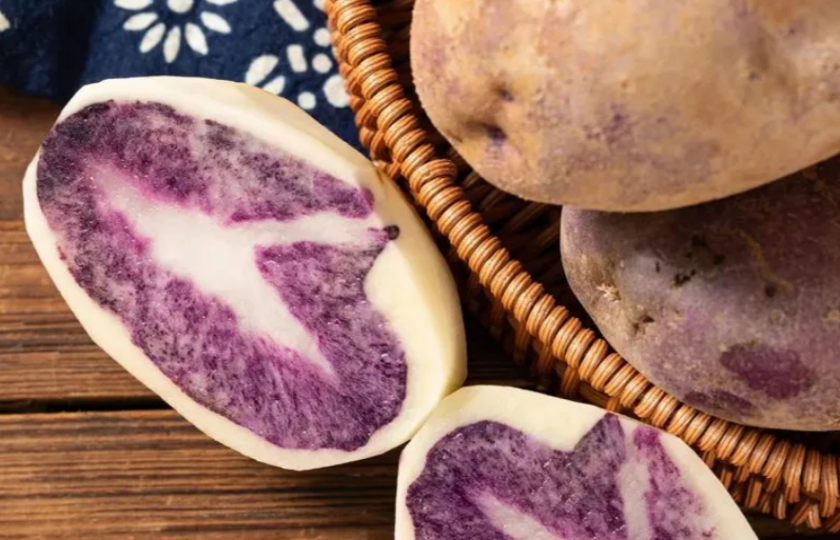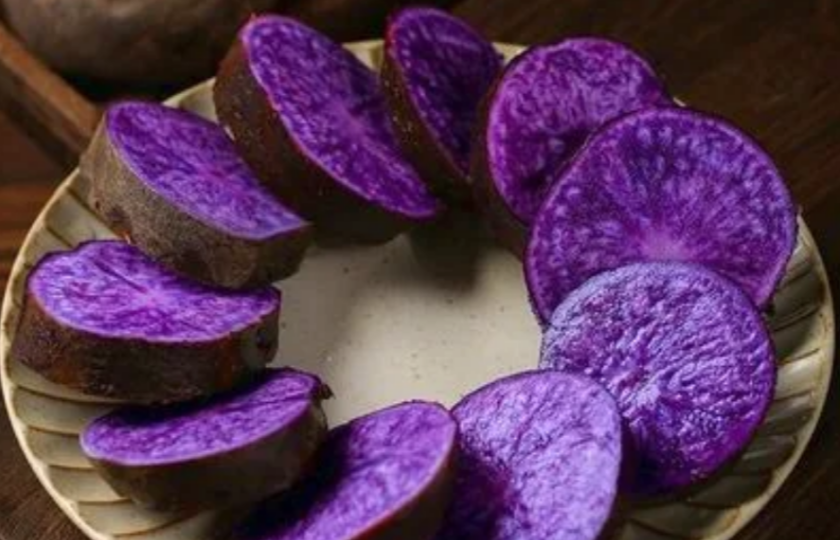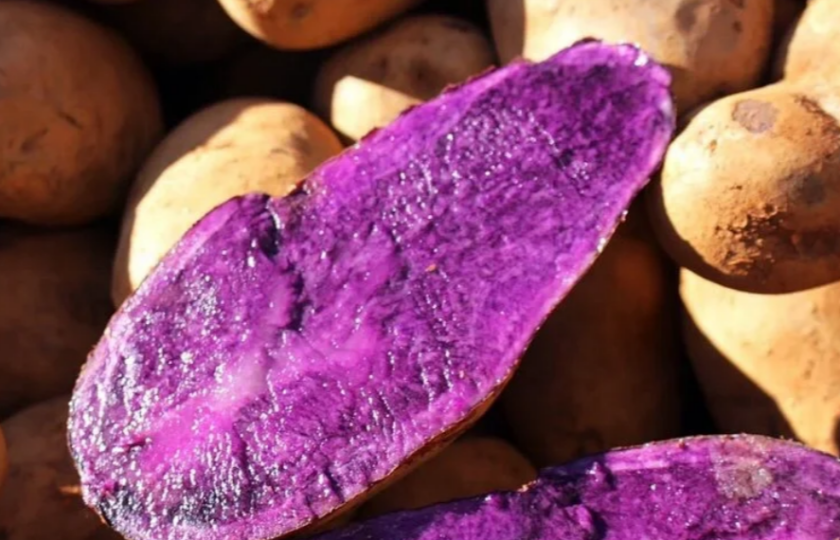Curious about whether the insides of purple potatoes should be purple?

Purple potatoes are very delicious and their insides are purple. So, should the inside of purple potatoes be purple? Let's explore the answer together!
Are the insides of purple potatoes supposed to be purple?
The inside of purple potatoes is not necessarily purple and may be affected by the following reasons:
Variety differences
Different purple potato varieties may show different internal colors. For example, varieties like "Purple Baby" usually have purple or deep purple interiors. But for some varieties, although the skin is purple, the inside may be white, light yellow or pink-purple.
Influence of growing environment
The depth of color of purple potatoes is sometimes also affected by the growing environment. If grown under conditions of insufficient sunlight or too low temperature, the internal color of the potato may not be as vivid as the skin and appear lighter.
Maturity
Incompletely mature purple potatoes may not fully show purple on the inside but rather a lighter color. As the potato matures, the internal color usually gradually deepens to approach the purple of the skin.
Source of purple color
The purple color of purple potatoes comes from anthocyanins, which are a powerful antioxidant substance and usually concentrated in the outer skin part. So even if the outer skin is purple, the internal color does not necessarily completely follow the outer skin.
Conclusion:
If the inside of your purple potato is white or other light colors, don't worry. This is a normal phenomenon. No matter what color the inside is, as long as the skin is purple, it is a purple potato and there is no problem with taste and nutrition!
What is the discoloration inside potatoes?
The discoloration inside purple potatoes is caused by multiple factors. The reasons are as follows:
First, it may be caused by oxidation. Potatoes contain phenolic substances. When potatoes are cut or peeled, phenolic substances will come into contact with oxygen in the air and undergo an oxidation reaction under the action of polyphenol oxidase to generate brown substances. Just like apples will change color after being cut. This situation is very common, but it will not affect the food safety of potatoes. Just cut off a little of the discolored part.

Second, it is due to squeezing or collision. If potatoes are pressed or knocked during transportation or storage, the internal cell structure will be damaged. At this time, the chemicals inside the potato will change and local discoloration may occur, such as turning black or brown.
It may also be due to frostbite. If potatoes are in a low-temperature environment for a long time, their internal tissues will be frostbitten. The frostbitten part will change color and the texture will become soft and mushy. For frostbitten and discolored potatoes, it is best to remove the discolored part before eating. If the frostbite is very serious, it is not recommended to eat.
In addition, if potatoes are infected with germs, they will also change color. For example, if potatoes are infected with black spot germs, there will be black spots or patches inside. Such potatoes contain toxins and must not be eaten.
Is it safe to eat potatoes that are pink inside?
It's generally safe to eat potatoes that are pink inside, as long as they aren't green or sprouted.
The pink color can sometimes be due to certain potato varieties, such as "red" or "rose" potatoes, which naturally have a pinkish hue inside.
However, if the potato has green spots, it may contain solanine, a toxic compound that can cause nausea or other symptoms if consumed in large amounts. If the potato is pink but not green or sprouted, it's perfectly fine to eat!
How to tell if potatoes are bad?
You can judge whether a potato has gone bad by the following methods:
Look at the appearance
You can check the skin of the potato. Usually, a healthy potato has a smooth and firm skin without obvious damage. If there are black or brown spots on the potato skin or there are rotten parts, it means that it has started to go bad.

Softness and hardness
You can gently press the potato with your hand. A good-quality potato is hard. If the surface of the potato becomes soft and can be easily indented, it means that the potato has started to rot and it is best not to eat it anymore.
If the potato is slightly soft, especially an old potato, it can also be processed by peeling and removing the softened part. But a completely softened potato cannot be eaten anymore.
Smell
Under normal circumstances, fresh potatoes will have a natural earthy smell. If the potato emits a sour, moldy or rotten smell, it means that it has gone bad. At this time, it is best to throw it away directly to avoid eating it.
Look at the color
When potatoes are exposed to sunlight, their skins will turn green due to the growth of solanine. Solanine is a natural toxic substance. Excessive consumption may be harmful to the human body.
When you find green parts on potatoes, you can cut off these parts. But if the green has penetrated into the inside of the potato, it is best to throw away the whole potato.
Sprouting
Potatoes that have been stored for a long time are prone to sprouting. Sprouted potatoes will contain solanine inside, and the sprouted part may also be toxic. It is best not to eat them anymore.
Are potatoes with pink eye safe to eat?
"Pink eye" refers to the pigment precipitation at the eyes of potato sprouts, usually manifested as red, purple or black spots. It usually occurs during the growth process of potatoes and may be caused by temperature changes, potato trauma or the characteristics of the variety itself. It may also be caused by improper storage environment.
If the potato only has red or purple "eyes" on the surface, generally speaking, it can be safely eaten. The red or purple parts are usually just pigment changes on the skin or at the eyes, which does not affect the internal quality of the potato. Just cut off these discolored parts and the remaining part of the potato can be eaten normally.
How can you tell if a potato is cooked?
It is very simple to judge whether a potato is cooked. There are mainly the following methods:
You can poke it with chopsticks. Insert chopsticks into the potato. If it can be inserted easily with almost no resistance, just like inserting it into soft butter, then this potato is probably cooked. If it feels very difficult to insert and the potato is hard, it is definitely not cooked yet.
Look at the appearance. A cooked potato will have a slightly wrinkled skin and the color will become more uniform and duller. If the skin of the potato is still very smooth and shiny, it may need to be cooked for a while longer.
Taste it. However, this method may burn your mouth, so be careful. Cut off a small piece of potato and taste it. If the texture is soft and there is no hard core, then it is cooked. If you can still feel a hard core or a very raw taste, you still need to continue cooking.
For different cooking methods, such as boiling, steaming and baking, the cooking time of potatoes will be different, but these judgment methods are very practical.























